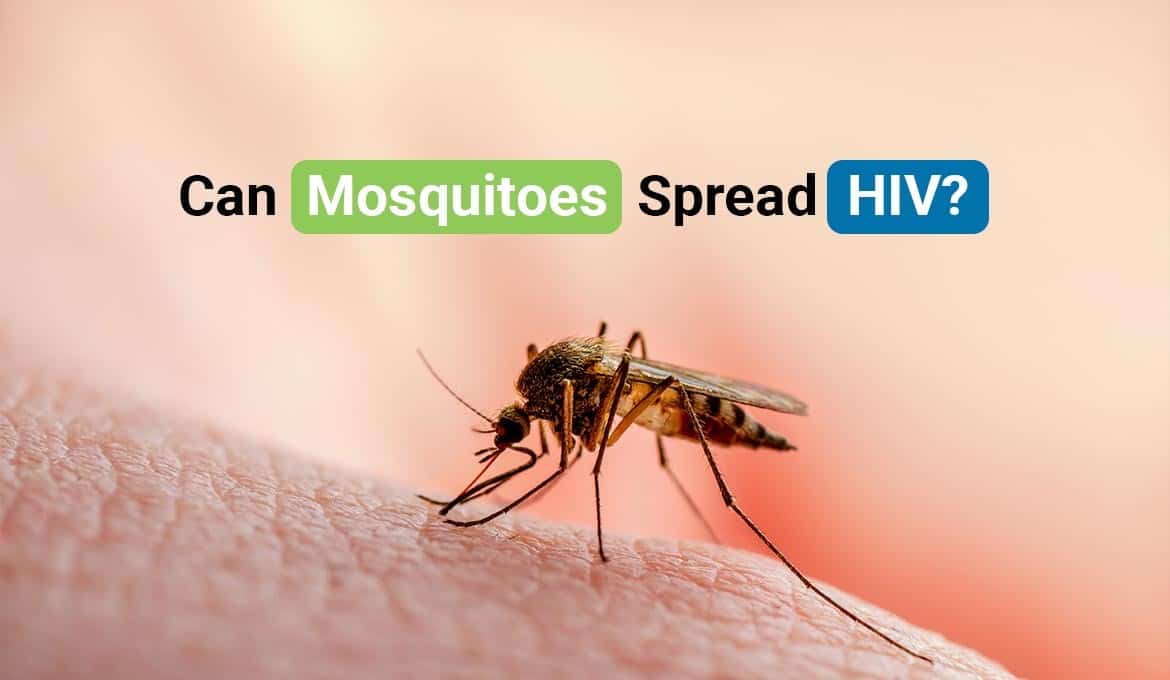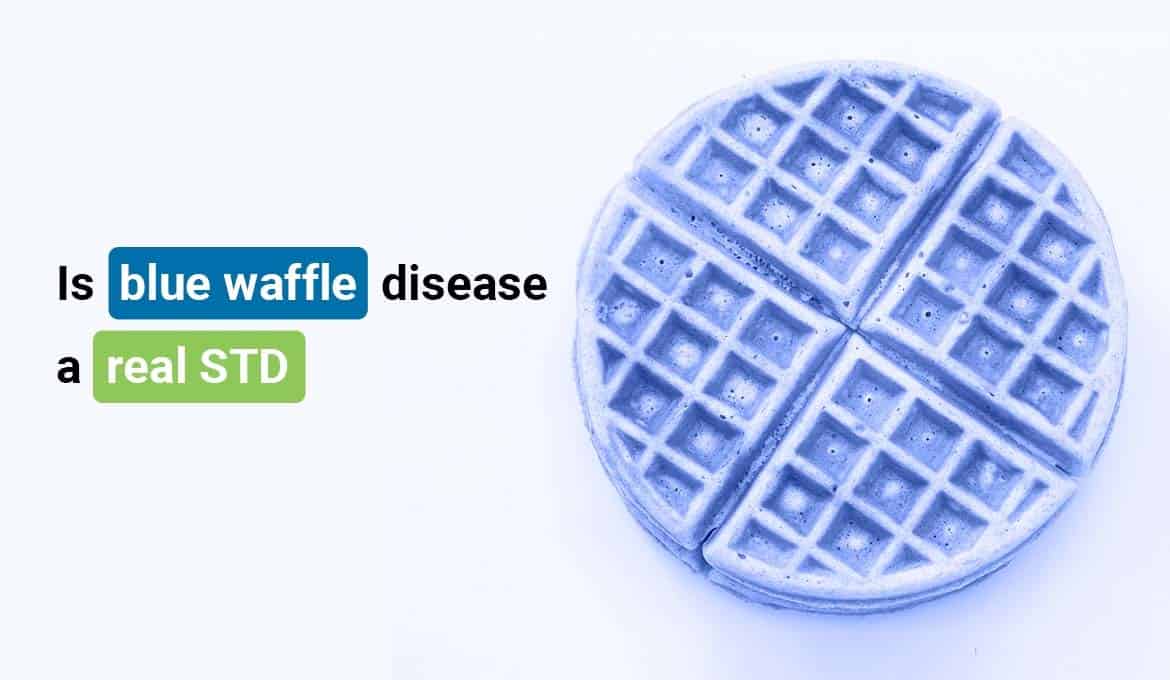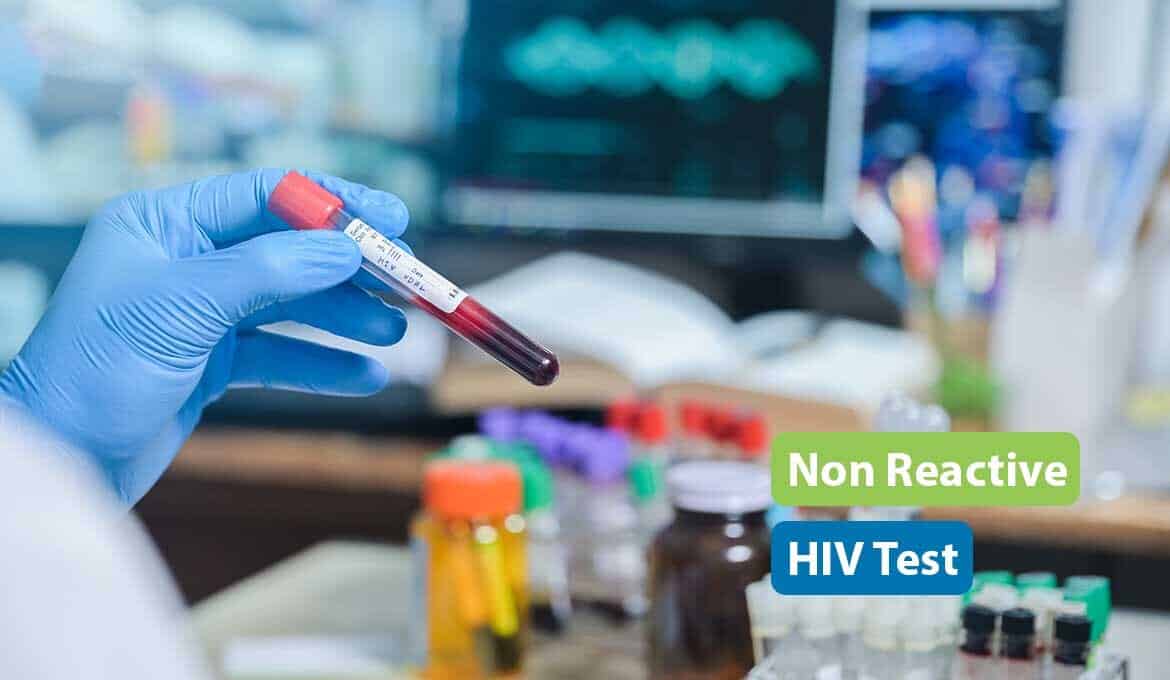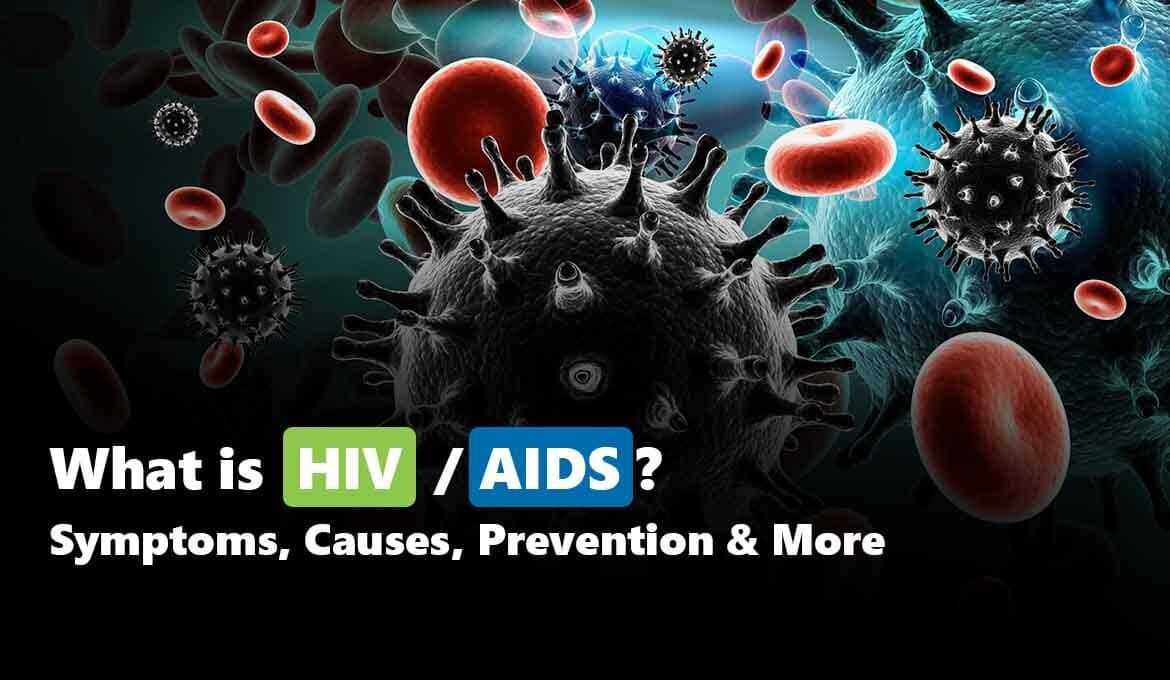
Health is wealth, goes the saying. Having good health, free from diseases and injuries, is something everyone strives for. Most people try to take active steps to ensure this.
This includes following a healthy diet, getting adequate physical activity, avoiding harmful substances, and maintaining a hygienic environment.
Despite such efforts, diseases can sometimes be transmitted through vectors such as mosquitoes, ticks, flies, fleas, and mites. Conditions such as malaria can be transmitted via such vectors. This form of disease transmission can be beyond our control.
The threat of contracting diseases in this way can be scary as there is no way of avoiding vectors altogether. This can especially be scary if there is a threat of chronic conditions, such as AIDs, being transmitted this way.
This article reveals whether the threat of AIDS being transmitted through mosquitoes is real.
About HIV/AIDS
Human Immunodeficiency Viruses (HIV) is a category of retroviruses that can infect humans, leading to Acquired Immunodeficiency Syndrome (AIDS). This condition hampers the human immune system and can lead to its progressive failure over time.
After entering the human body, HIV has an incubation period lasting from several months to a few years. The initial period of infection is characterized by symptoms similar to influenza. The condition progressively worsens the immune system over time.
As the HIV infection worsens over time, it leads to a severe condition called AIDS. This leads to opportunistic infections, which do not affect healthy people as a functional immune system can easily thwart them.
Other symptoms include chronic fatigue, rapid weight loss, and neurological issues. If left untreated, the average survival for such conditions is 9-11 years.
HIV is transmitted through bodily fluids like blood and semen and primarily through sexual contact. It can affect people of all age groups, sexual orientations, races, and genders.
However, certain groups, like drug injection users, sex workers, and homosexual men, are at a higher risk of contracting the virus. Other factors that determine risk include sexual promiscuity, safe-sex practices, and socio-economic background.
Despite vigorous efforts made by the medical community, there is no cure for HIV infection at the moment. However, rapid progress has been made in developing treatments to manage the infection and check its spread.
Additionally, preventive measures like safe-sex practices, scans of donated blood, use of sterile syringes, etc., can help limit virus transmission. Antiretroviral Therapy (ART) is a treatment that can control the progress of HIV infection and deter it from progressing to severe conditions like AIDS.
Treatment options like ART have increased life expectancy for HIV-infected individuals to several decades.
How is HIV Transmitted?
HIV is transmitted through body fluids like blood and semen. The primary transmission mode is through sexual activity, followed by blood contact and natal transmission.
Sexual –
The most frequently observed mode of HIV transmission is sexual. The risk of transmission differs based on the type of sexual activity and any precautions adopted.
It is to be noted that an HIV-infected individual who has undergone treatments such as ART for an extended period may carry an undetectable viral load. The chance of transmission by such individuals through sexual activity is negligible.
Conversely, the chances of transmission increase manifold in the presence of Sexually Transmitted Infections (STIs), tears in the genital tissue, and open wounds.
Anal sex:
This type of sexual activity has the highest probability of transmission of HIV. The mucous membranes inside the rectum are thin and absorb substances easily.
During anal sex, fluid from the penis, including the semen containing HIV, can enter the bloodstream through the mucous membrane in the rectum.
Conversely, HIV may be transmitted through the urethra to the other person as well. This makes the practice of safe sex practices like the use of condoms extremely vital when practicing anal sex.
Vaginal sex:
The chances of HIV transmission through vaginal sex are lower compared to anal sex. However, the risk still exists as HIV can be transmitted through semen, vaginal fluids, and menstrual fluids.
The mucous membrane of the vagina is considerably thicker and resists the absorption of HIV into the bloodstream. The risk of transmission, however, increases manifold if there is any tearing in the vagina or the penis.
Oral sex:
The risk of transmitting HIV through oral sex is extremely negligible. Certain cases have been reported due to a tear in the mouth or genitals.
Blood –
HIV flows in an infected person's blood and can be transmitted to others from there.
Transfusion:
There is a high risk of transmission if blood donated by an HIV-infected individual is transfused to a healthy individual.
These risks have been eliminated in most countries by the screening of donors and donating blood. However, the risk still exists in some poor economies where donors are not screened.
Syringes:
Reuse of syringes, and use of unsterilized needles, pose a significant risk of HIV transmission. This is mainly observed in drug users who reuse the same syringe, often unsterilized, to inject each other with drugs.
The blood from an infected individual can be passed on to other individuals who use the same needle. This transmission mode is also observed in poor economies and war zones, which lack the medical facilities to use fresh syringes or equipment to sterilize syringes.
Transmission through tattoo needles and body piercing is extremely unlikely in regulated centers as the equipment is sterilized as per law. The risk exists when getting a tattoo or piercing from an unregulated place, like a prison.
Contamination:
The chance of transmission through contaminated food is meager. Consuming food contaminated with blood or other fluids from an HIV-infected individual while unhygienic does not risk virus transmission.
The virus doesn’t survive for long outside the human body and is generally killed during food preparation, if not through stomach acid.
However, a trim level for risk exists in case infants consume contaminated food as their digestive system might not be developed enough to kill all pathogens.
Mother to child –
A baby can contract HIV from an infected mother during pregnancy, delivery, or breastfeeding. This mode of transmission accounts for 90% of cases of HIV in children. Regular treatment of HIV, including Antiretroviral Therapy, can reduce the risk of vertical transmission to less than 5%.
Can mosquitoes spread HIV?
Most diseases have misinformation circulated regarding them which has no scientific basis. The deadlier the condition, the greater the amount of misinformation.
This holds for HIV/AIDS as well. Various claims are made without any scientific backing regarding how the virus can be transmitted.
Among the many claims, one popular one is that mosquitoes can be a mode of transmission of HIV. This theory was founded to explain the higher virus transmission in Florida, USA.
The Centre for Disease Control (CDC) almost immediately rendered the idea false and has been further disproven by various medical research teams.
Here’s why mosquitoes can’t transmit HIV –
i). They digest the virus:
HIV doesn’t survive outside the human body and cannot take mosquitoes as its host. When mosquitoes ingest the blood of an HIV-infected person, the HIV in the blood is slowly digested. This ensures further transmission is not possible.
ii). They do not ingest enough HIV:
The amount of blood ingested by mosquitoes is negligible and can potentially contain trace amounts of HIV at best. This amount is not enough to cause an infection.
iii). Mosquitoes are not syringes:
One of the ideas that this theory is based on is that mosquitoes are similar to syringes, and the reuse of syringes causes transmission.
However, the food canal of mosquitoes is a one-way valve and cannot push blood back into the next person's body. Furthermore, mosquitoes flush their oral canal with saliva before ingesting blood a second time.
Conclusion
HIV infection can be a complex condition to live with and potentially progress to the possibly fatal disease of AIDS. However, several advancements have been made, enhancing our ability to treat those infected with HIV.
With regular treatment, it is possible to achieve low viral loads and stop the infection from progressing to AIDS. This can help infected individuals live for decades without any hassle.
Mosquitoes can be potentially dangerous vectors capable of transmitting several diseases and pathogens. However, HIV is not one of them. The virus cannot survive outside a host beyond a short period.
Furthermore, mosquitoes don’t ingest enough blood or HIV to pose a threat of infection.
There is a lot of misinformation circulating regarding the most significant diseases. Fact-checking these claims and consulting a certified healthcare provider before jumping to conclusions is advisable.
It is advisable to get routinely scanned for STIs and STDs if you have an active sex life to get ahead of any potential issues. Practice safe sex and use contraceptives when engaging with new partners to reduce the risk of transmission of any diseases.
FAQs
1. Can a bug transmit HIV?
Ans: HIV is transmitted through bodily fluids like blood and semen and primarily through sexual activity. It can also be transmitted from mother to child. HIV is incapable of surviving for long outside a host human. Therefore, bugs cannot transmit HIV.
2. Can a mosquito spread HIV if you accidentally squash them?
Ans: Theoretically, this follows the idea of transmission by contamination. A mosquito that has ingested blood from an HIV-infected individual may pose a risk when squashed over an open wound of a healthy individual. However, a mosquito doesn’t ingest enough HIV to be able to transmit it in this manner.
3. Can HIV spread through saliva?
Ans: HIV spreads through bodily fluids like semen, menstrual fluids, vaginal fluids, and blood. However, it is not transmitted through saliva or sweat.
4. How to prevent HIV transmission?
Ans: Making treatment options, like ART, available to affected individuals would ideally be the best way to prevent HIV transmission. Regular treatment can make the viral loads negligible and help avoid further transmission.
A healthy individual can avoid contracting the virus by practicing safe sex and using contraceptives. Furthermore, avoiding drug use, and ensuring sterilization of any needles used on the body, can prevent contracting the virus.
Read Also:




